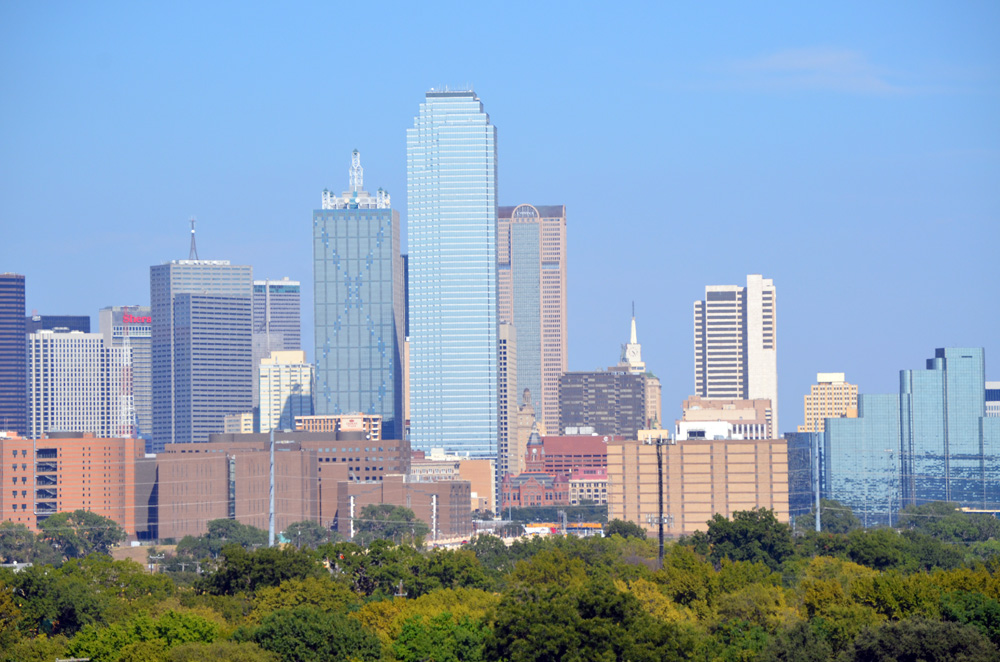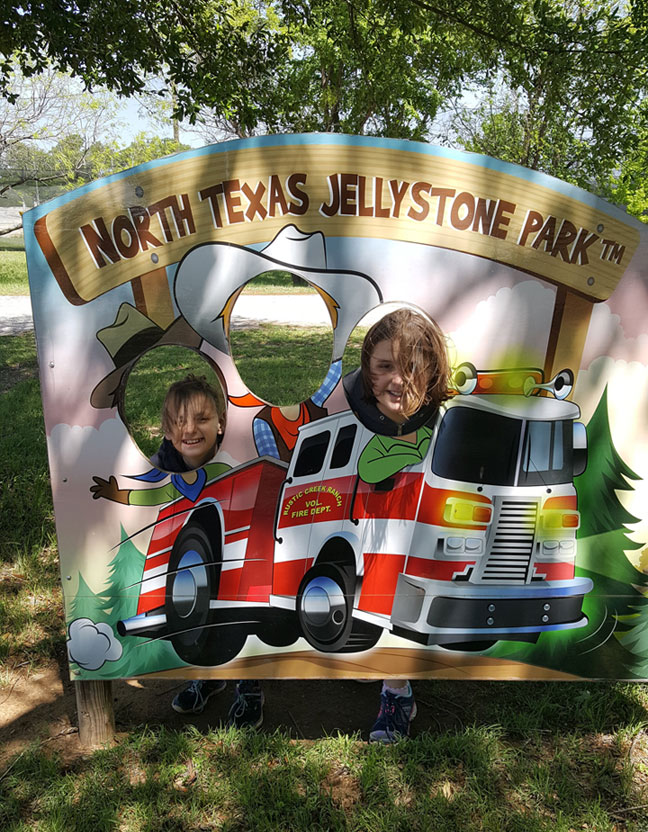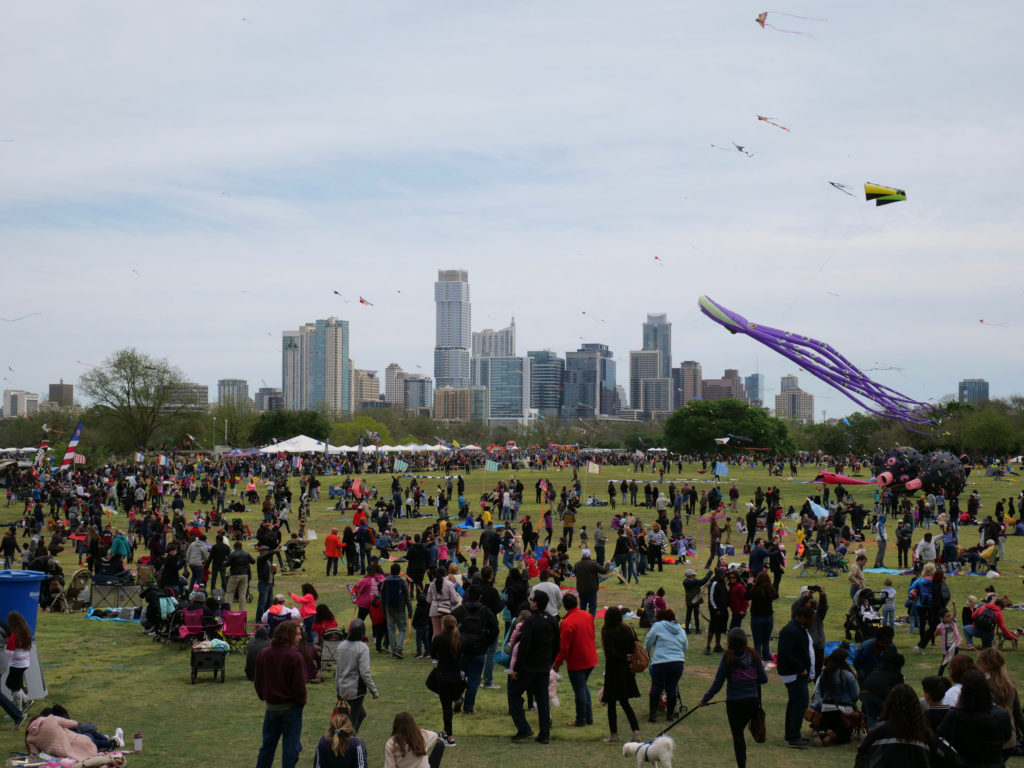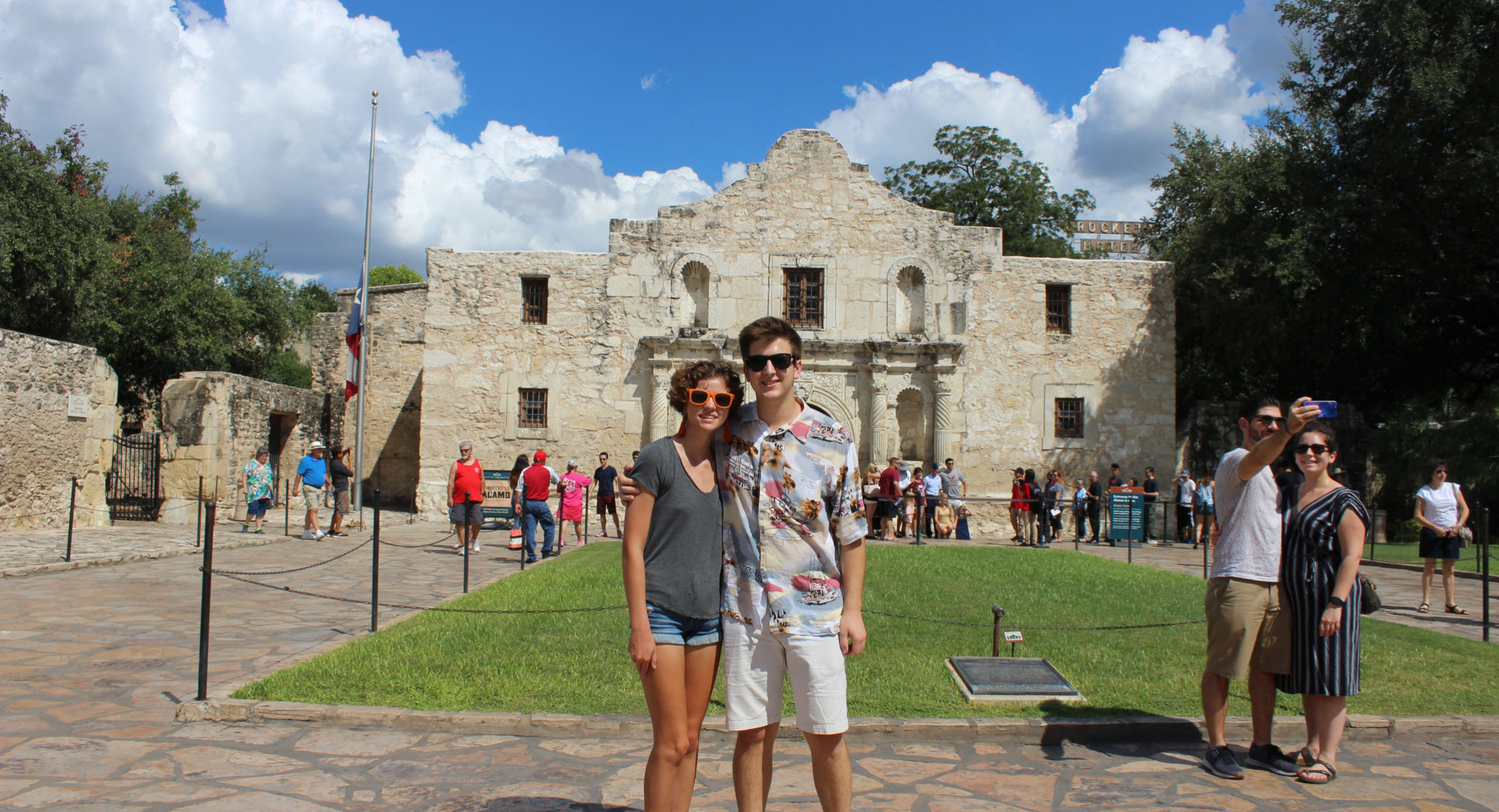Jennifer Payne seemingly had it all. A 40-year old stay at home mom, she lived 20 minutes from the luxury shops of Beverly Hills’ Rodeo Drive. The Malibu beaches were less than an hour’s drive away. Some of the best museums in America were readily accessible from her home in Sherman Oaks. Her two young children enjoyed the Disneyland and Knotts Berry Farm amusement parks in nearby Orange County. Her husband Matt worked nearby in Burbank, close to the glamorous Disney, Universal and Warner Bros. studios.
Yet five years ago, after Matt’s company at the Burbank Airport was sold to another owner, the young family decided to leave trendy California and move east to Texas. They could have gone back to their original home in Denver, but a state with a lower cost of living and more economic opportunities seemed enticing. “We asked if we could relocate because we were living on one income and that goes much further in Texas,” Jennifer Payne explains.
In the past century, America already has seen two mass migrations, this may be the beginning of a third. Starting in 1916, six million African Americans fled the South in search of a new way of life and high wage factory jobs in the Northeast and industrialized Midwest. By 1970 more than 11,000,000 African Americans had abandoned the rural South. The second great migration of the 20th Century occurred during the 1930s when 2,500,000 Dust Bowl farmers – more than 400,000 from Oklahoma alone – abandoned their parched fields and headed to California, seeking irrigated cropland or salaried jobs. Now, the third migration – from California to Nevada, Arizona and Texas – is getting underway.
According to the Texas Realtors Association’s 2020 report, more than 86,000 Californians recently moved to Texas compared to around 37,000 Texans who have moved the other way in 2018. The migration of Californians coming to Texas shows no signs of abating.
Money motivates most migrants moving east. “California has the highest income tax rate, highest state sales tax and highest fuel tax in the union,” writes Jon Coupal, president of the 200,000-member Howard Jarvis Taxpayers Association, the state’s largest taxpayer advocacy organization. “And when the cost of living is taken into account, California has the highest poverty rate in the nation.”
Taxes are a big consideration in one’s decision to leave. In California, residents can pay a personal income tax rate of 13.3%, depending on the tax bracket, just in state income taxes according to the nonpartisan Tax Foundation in Washington DC. State and municipal sales taxes can add an additional 10% or more.
Businesses also have to pay an 8.84% flat tax to Sacramento. Texas, on the other hand, has a state franchise tax where most businesses are assessed at a rate of 1%. In 2020, the Tax Foundation ranked California’s business tax climate as 48th in the nation while Texas landed the 13th spot. Lower taxes, combined with ample undeveloped land, allow Texas cities to still grow outward rather than up, lowering development costs for corporate headquarters and residential suburbs.

Dallas is the center of a sprawling metroplex of 6.3 million where many California migrants chose to settle.
Large corporations are already jumping on the low taxes and benefits of moving a business to Texas. Apple in 2019 expanded its Texas presence with a new campus to build MacBooks in Austin. In 2018, Toyota moved its headquarters from Southern California to Plano, Texas. Just recently Elon Musk expressed his interest in moving Tesla’s California holdings to Texas.
Smaller businesses and families are also considering a move to a state where their income will go further. When the Payne family moved east they inadvertently became part of a significant movement of young families.
Money also drives another huge reason to move to Texas: the housing market. The Massachusetts Institute of Technology in 2019 found that housing costs are 59.1% higher in California than in Texas. While Texas does have higher property taxes, homes are still cheaper in comparison.
Tina Hare moved from Los Angeles’ San Fernando Valley to Flower Mound, Texas. Housing was one of her main reasons for moving. “The house we’re in now cost a little over $300,000,” says Hare. “In California, the same house would cost $1.2 million.”
Texas’ public education system also draws in Californians. The National Education Teachers’ Union in 2016 estimated that the number of students in average daily attendance per teacher was 22.5 kids in California, compared to 14.2 students per teacher in Texas. They also found that Texas had more teachers than the national average. According to the U.S. News and World Report’s best states for PreK through 12th grade rankings, Texas ranked 33rd with California trailing behind at 37th.
Tina Hare had to put her child in an expensive private school in California, as the public schools were not up to her standards. “There is no reason why any child should have to walk through a metal detector to go to kindergarten,” she says.
For Monika Heaton, another Californian turned Texan, the public schools in Texas offered more opportunities for her daughter. “The public school system that was afforded my daughter here is a lot better than what it was in California,” Heaton said. “California, unfortunately, had cut quite a bit of languages and AP courses. It’s my understanding that the high school that my daughter would have gone into didn’t offer AP courses until her junior year.”
Jennifer Payne not only enjoys the academic side of her kids’ schools, but also the community that they bring. “We have elementary school, an intermediate, middle, and high school and they all support each other,” she says. “When high school seniors graduate they go back and walk the halls of the elementary school they went to and high five all the kids to give them a sense of where they’re going to go. There’s a ton of school pride.”

Sydney Payne (right) and Abby Akmakjianat at Yogi Bear’s Jellystone Park in Burleson, Texas. Jellystone has lots of camping options and plenty of outdoor activities for kids.
California and Texas view their history and cultural heritage from very different perspectives. Texas history is required to be taught in 4th and 7th grade. California also teaches state specific history in 4th grade, but these teachings have become controversial in recent years.
For example, both states’ history relies on an understanding of Spanish missions. For decades, a popular project in California schools was to use popsicle sticks and sugar cubes to build replicas of missions, yet the Department of Education in 2017 considered banning the project because the chain of 21 missions established by Franciscan Junipero Serra in the 18th century now are viewed as centers of Spanish colonialism that might be considered offensive to indigenous populations.
Texas, on the other hand, is very proud of its heritage. Schools focus on cattle drives, vaqueros, and, most importantly, the Alamo. “It’s pretty important,” Jennifer Payne smiles. “When classes go on school trips they go to the Alamo and they go to the Capitol.”
State heritage differs outside of school curriculums as well. In California, missions are often vandalized. In 2017, someone cut off the head and poured red paint over a statue of St. Junipero Serra at Mission Santa Barbara. On the other hand, Texans see missions as a symbol and identity marker. The Alamo, one of the most famous missions in Texas, is a huge tourist spot. The phrase “Remember the Alamo” is engraved in every Texan’s mind as well as stories of James Bowie and Sam Houston.
Attitudes toward heritage sites and teachings may resonate with some persons. For Texans, missions and other historical sites do not represent oppression but have been refurbished into sites of cultural pride and learning.
Texas also offers individuals and families the opportunity to live life at a slower pace, feel safer and enjoy Southern hospitality. “You can live in a community with a sidewalk and your child can ride their bike,” says Hare. “It feels very small-town America here” even in the Dallas Fort Worth metroplex with a population of 6,301,000.
Not only do people see differences in their surroundings, but also the people they interact with.
Hare remembers an incident when she first moved to Texas while she was shopping for groceries. An older gentleman walked up to her little girl in the shopping cart and handed her an origami box made out of a dollar bill he had folded himself. She tried to give him another dollar, but he refused and returned later with another dollar bill creation in the shape of a crane. He explained that he would do this for his grandkids who don’t live in the area. Her daughter still has his creations in her room today.
“You would never see that in California,” Hare said. “Nobody would ever do that. Just the kindness of a stranger seeing a little girl who’s stuck in a grocery cart while her mom is shopping.”
Heaton also remembers the culture shock she first experienced when moving to Texas as people passing by in cars were waving at her and her husband.
“I’m looking at my husband going, ‘Do you know them?’ and he goes, ‘No, I have no idea who they are’,” Heaton said. “I’m like why are they waving to us? And realize that that was just what people did here.”

Austin, Texas’ skyline during the 2019 ABC Kite Fest.
Though Texas isn’t always thought of as the most beautiful state regarding the outdoors and climate, it does have some gems to offer.
Ted Bauer is an outdoor enthusiast. He is known for taking on any adventure, especially if it involves trekking up mountains. He grew up in Iowa and moved to California for the environmental wonders it offered, and then later to Texas.
While it is hard to argue that the pine forests of East Texas can compare to California’s Sequoia and Redwood trees, it does have outdoor activities and places to explore. Ted, while missing California, still finds hikes up to his par in Texas. He recently visited Enchanted Rock State Park: a massive pink granite dome rising above Central Texas, Guadalupe Mountains State Park: the highest natural point in Texas, and the LBJ National Park: the ranch the 36th president grew up on. With more than 80 parks to explore, Texas offers a variety of ecosystems from prairies, to forests, to caves, to deserts.
California is also known for its moderate temperatures year-round, which people applaud left and right. Texas on the other hand has its scorching summers. Hare has other opinions.
“I like the weather [in Texas] better,” Hare said. “I know that sounds weird because everyone in California is like, ‘Oh, I miss the weather.’ It’s just sunny and 72 [degrees], 365 days a year. It never changes. Here, at least we get tornado warnings, and we get hail storms, and occasionally we get the ice storm or there’ll be a winter you can actually turn on the fireplace here. We get sort-of-seasons without all of the mess that places like Michigan get. We have halfway seasons like California never gets.”

Texas has a reputation for being dry, but it has many lakes to offer, including Lake Texoma.
Water is an important part of living in Texas during the hot summers, and lakes are vital. Families go out to boat, tube, or just swim and hang around.
The large amount of land in Texas allows for better transportation as well. California can no longer expand or maintain freeways, even though cities such as Los Angeles need them more than ever. Twice in the past three years, the California State Assembly unsuccessfully has tried to pass legislation that would eliminate local zoning, allowing high rise dense housing along transit corridors. But people in California don’t want to live that way, making the decision to leave easier.
“I don’t have a cowboy hat or wear cowboy boots, but I had thought [Texas] was all going to be the wild wild west,” Heaton said. “I didn’t think that there would be Whole Foods out here,” she said.
Of course, there is a Whole Foods in Heaton’s small town of Colleyville. Before it was sold to Amazon, Whole Foods was a grocery chain that started in Austin, Texas. And more are on the way since Texas has to meet the expectations of all its new residents coming from California.![]()
Kirsten Hahn is a Radio-Television-Film and Journalism student at the University of Texas where she is a staff photographer for The Daily Texan.


